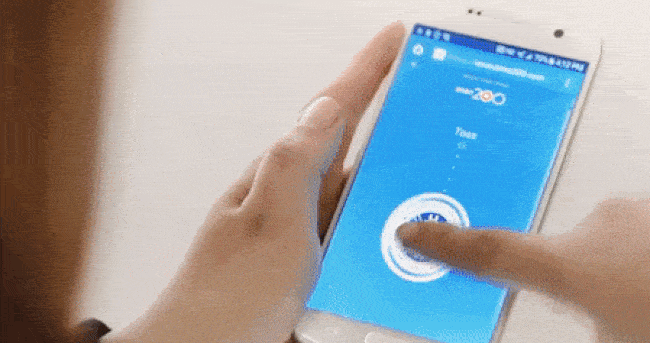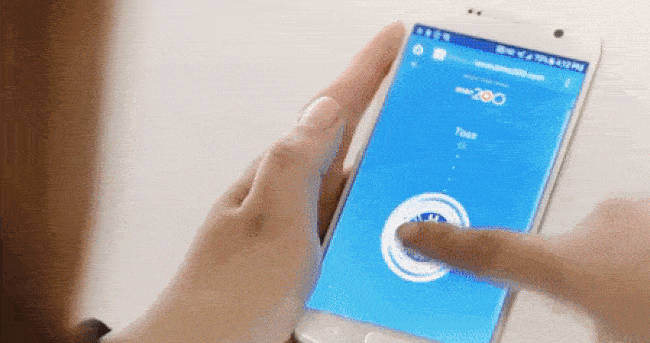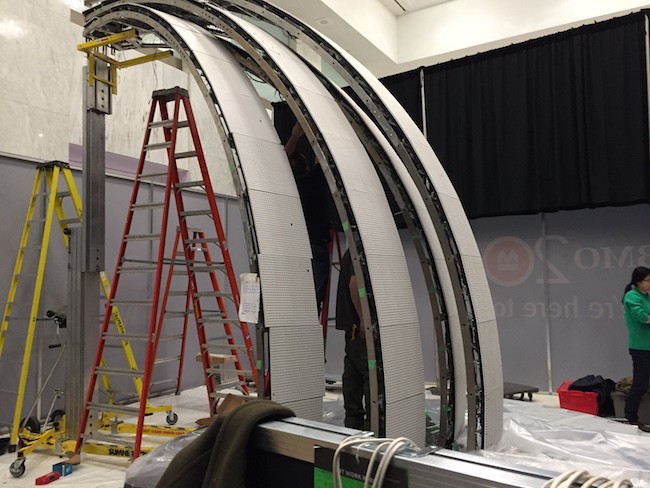
BMO Uses Flip-Disc Tech For Mobile App-Driven Wish Fountain
April 6, 2017 by Dave Haynes
In an odd twist, here’s a second post in a week about flip-disc technology being used as an alternative to digital screens.
The Bank of Montreal – one of the big five national banks in Canada – is celebrating its 200th year in business in 2017, and one of the things it is doing to mark that is something of a digital art installation in the company’s Toronto office tower.
The centerpiece is a “wish it forward” digital fountain that is a bit like a roman fountain, with water pouring from a pipe. A flip disc system is paired with software and a mobile application to allow people to walk up to the fountain and make wishes.

Here’s the story related by writer Ainsley Doty on Medium:
BMO teamed up with Secret Location, and with the help of Mosaic and GLOBOCORE, we created the Wish It Forward Digital Fountain?—?a traveling installation, mobile web app, and interactive website that all work together to help people share their wishes for the future.
The project kicked off with several days of intensive and collaborative brainstorming. “We had concepts including real coins, water, and lights. But as the idea evolved, we decided that the fountain’s primary purpose would be to connect communities both locally and globally,” says Andy Garcia, Art Director, Secret Location. “Once that was clear, the best option was to shape the experience around a digital fountain that people could use from anywhere in the world.”
Coming up with and clarifying the concept was just the first step in a lengthy creative process. Once the design of the fountain installation was set, the team needed to come up with the wish animations. The visuals would not only be communicated by the physical installation, but also within a fully digital environment, and carrying the aesthetic across the web app and website proved an additional challenge.
The fountain installation boasts 50,000 blue and white “flip-dots.” Each panel of flip-dots is connected to dozens of circuit boards that convert electronic signals into the physical sequences that bring the fountain to life. As the team soon learned, creating engaging animations out of circular flip-dots is no small feat.

“It was very iterative, at first,” says Travis Nischuk, Project Technical Lead, Secret Location. “We came up with a visual concept, but the first execution in WebGL didn’t work out and we had to pare back and regroup with our artists.”
When the creative team landed on the 11 designs that would correspond with the wish categories (Happiness, Connection, and Innovation are just a few of the categories) it was then up to the visual arts team to design animations that could be similarly communicated by 2D flip-dots and 3D renderings. Making sure that the animations checked all the boxes required the sustained efforts of a concept artist, a designer, a motionographer, a WebGL developer, and 3D modeller throughout the duration of the project.
The ripple effect
Finally, the team needed to come up with a way for users to make a wish. “At a water fountain, the act of flipping a coin is simple and quick, and we wanted to capture that simplicity,” says Garcia. “After months of testing and research, we used WebSocket technology to enable users to flip a coin from their screen into the physical fountain, and watch the fountain respond almost instantly.”
At the installation, two screens point users toward the mobile web app that allows them to interact with the fountain. When a user selects a category and inscribes (types out) their wish on the back of the digital coin, the coin and the fountain’s animation share the same iconography. If the user registers their wish, it’s stored in the Cloud, creating a digital wish universe for all to see.
Making digital wishes come true
Arguably the best aspect of this project is that the wishing isn’t merely symbolic?—?at the end of every month in 2017, BMO is going to make one of the digital wishes come true. So when Tracy wishes for “[paid] grocery bills for low income families,” and Shoshi wishes “to reconnect with [her] childhood friends back home in Israel,” there is a chance BMO could actually make it happen.
Here’s another story on it from Strategy.
The video is from … someone … just says National. A lot of it sis B-roll stuff, so skip along.
Looks like quite a few “stuck” discs on the thing. I don’t think this is the same gear developed by Brooklyn-based Breakfast and shown at DSE last week.



I can confirm that the tech used isn’t from Breakfast.